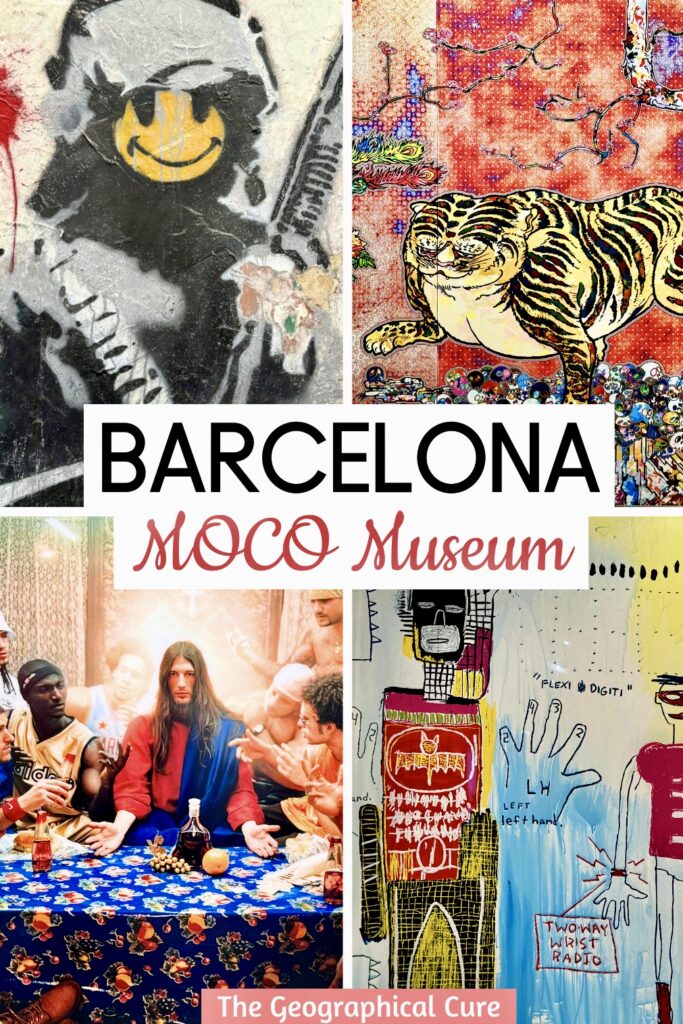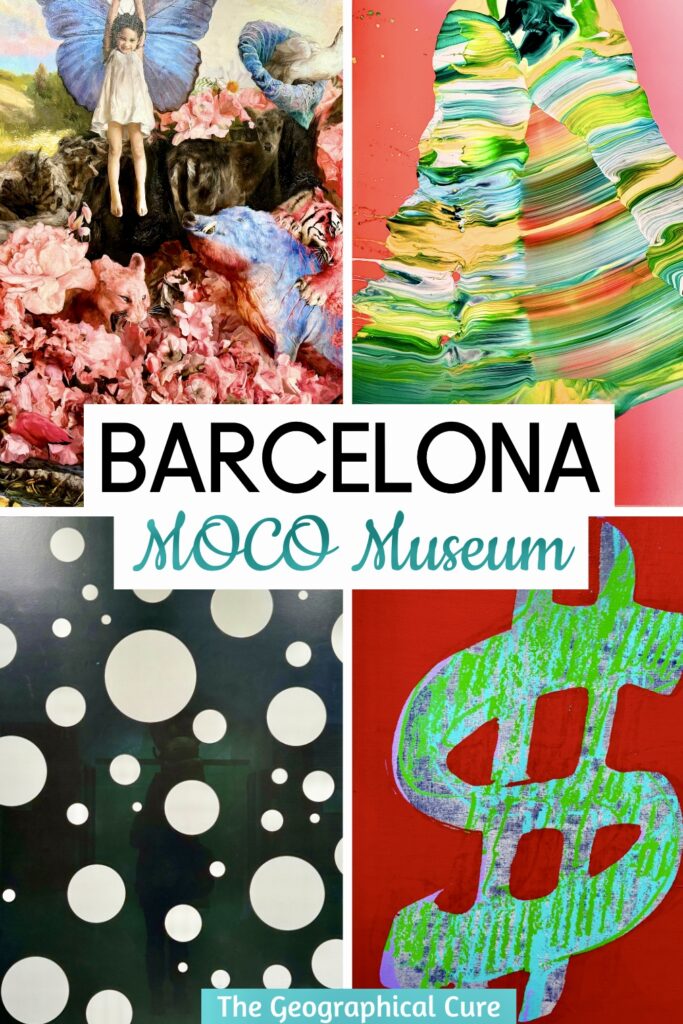Opened in 2021, the MOCO Museum is a pure delight. It’s situated in a 16th century Gothic Quarter palace once reserved for the city’s elite.
The fresh-faced museum is the city’s most photogenic gallery. The walls are hung with contemporary artworks by the likes of Banksy, Warhol, Kusama, Basquiat, and Dali.
There are immersive digital installations that will remind you of Japanese artist Yayoi Kusama’s infinity rooms.
It’s not a large space. Just a delicious bite of gorgeous art in a gorgeous setting. Your photos will be the envy of your social media followers.
>>> Click here to pre-book a MOCO ticket
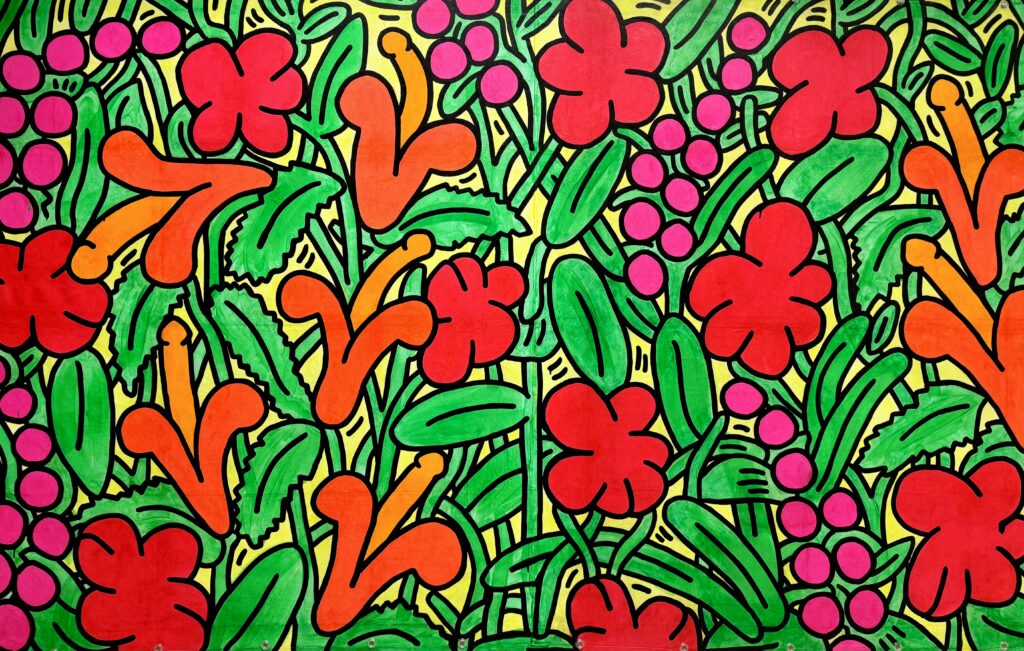
Guide To MOCO: What To See
Here are some of the highlights of MOCO Barcelona.
You may not see them all on a visit. The museum likes to switch up what’s on display to keep the space exciting.
Keith Haring, Green of Radio Delights
Pop artist Keith Haring’s The Garden of Radio Delights is a vibrant and dynamic painting that reflects his signature style and themes.
Created in 1984, the painting is a celebration of the energy and diversity of urban life. Haring’s characteristic bold lines and bright colors conveying a sense of movement and rhythm.
It captures the bustling atmosphere of New York City, where Haring was based and where much of his art was inspired.
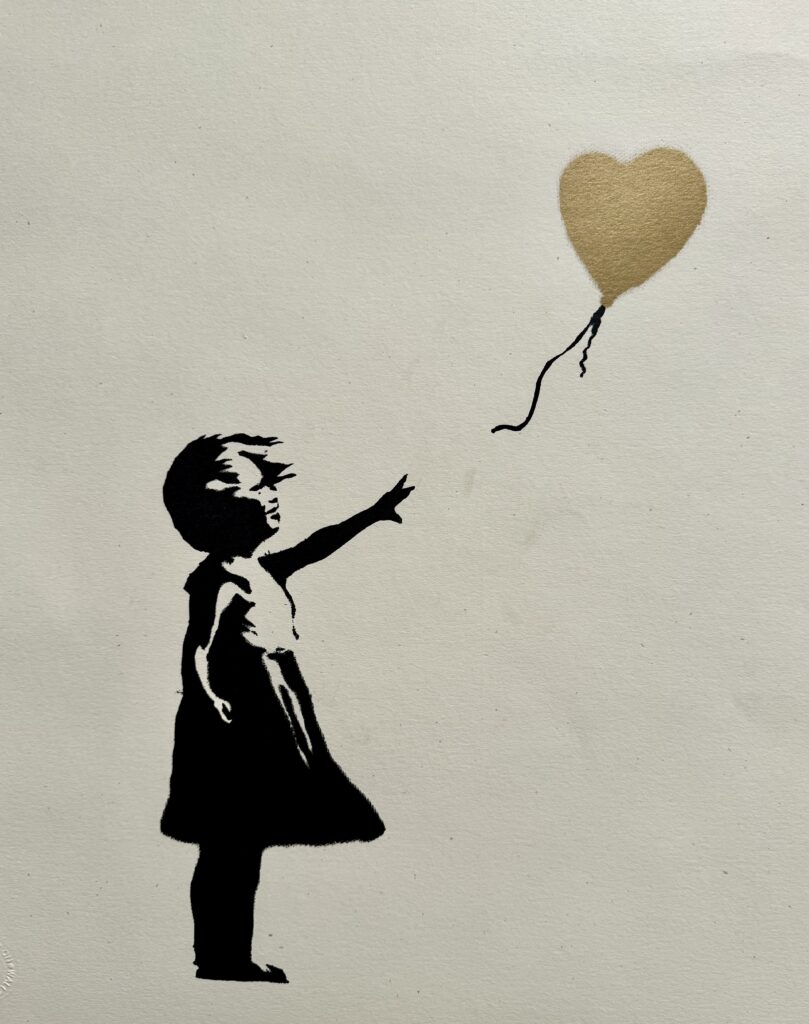
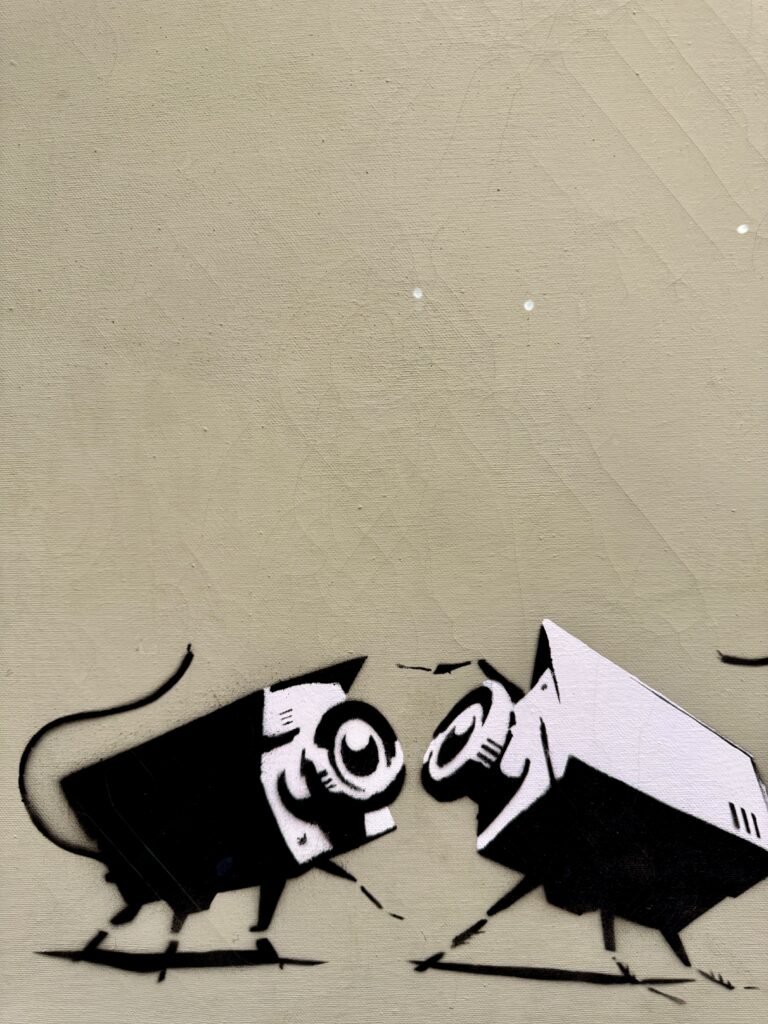
Banksy Artworks
Banksy is an enigmatic street artist known for his thought-provoking and often politically charged works.
With an identity shrouded in mystery, Banksy’s art is a voice for the marginalized and a critique of societal norms.
Through his distinctive stencil technique and clever juxtapositions, he challenges viewers to reconsider their surroundings and question authority.
To do this, he uses dark humor, satire, and irony.
In 2002, Banksy’s Girl with Balloon made its debut on London’s South Bank. In the artwork, a heart-shaped balloon drifts just out of reach of a young girl’s fingertips.
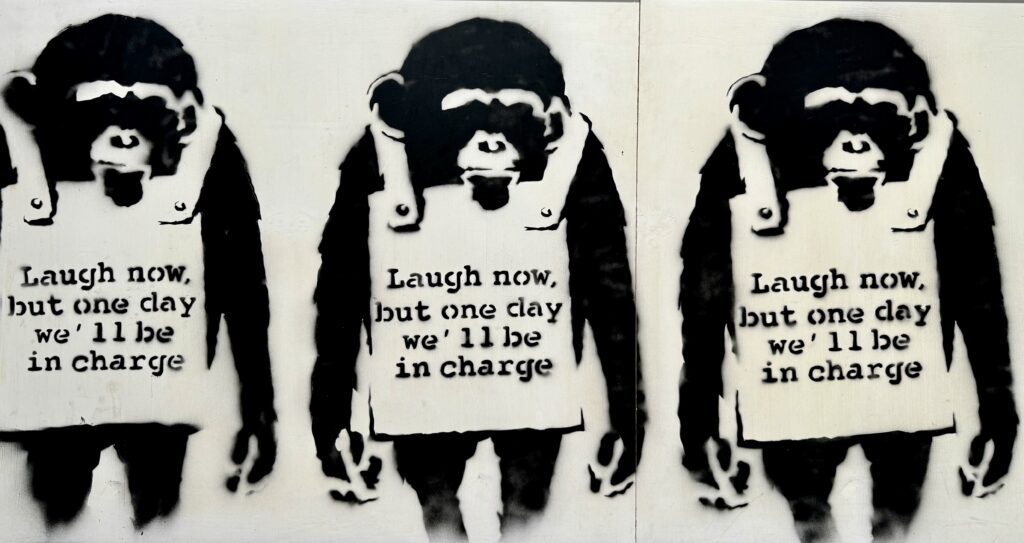
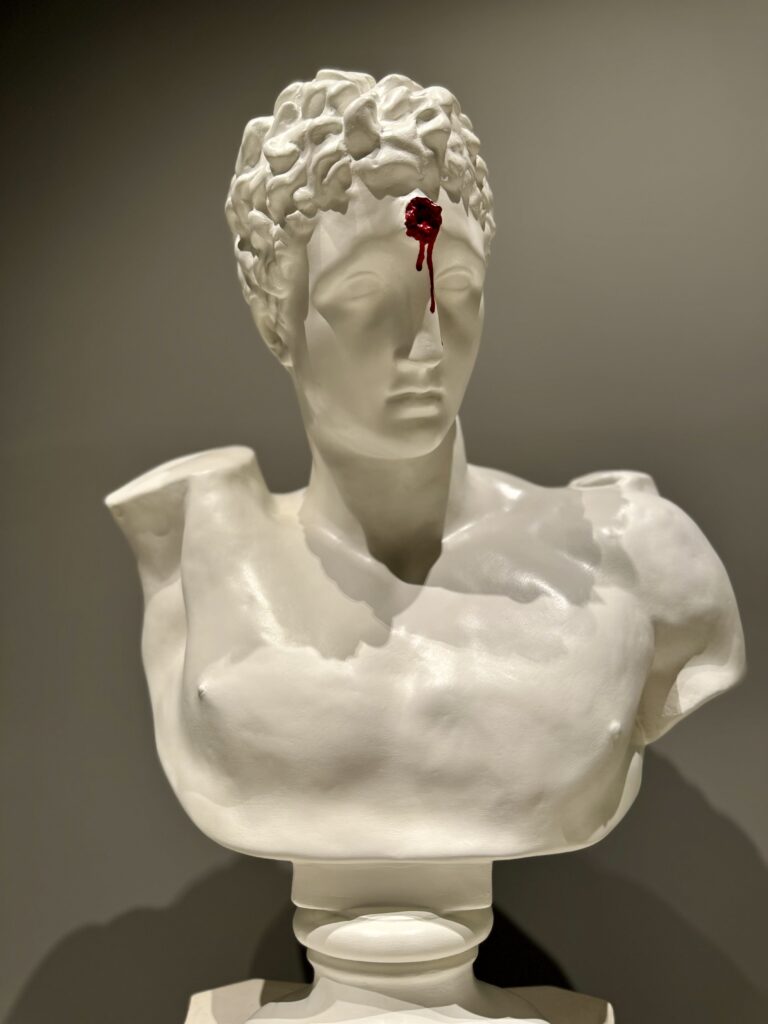
How to interpret this piece?
For many, this image evokes memories of childhood, symbolizing peace, happiness, innocence, and boundless dreams.
Yet, could it also convey themes of loss? Is the girl reaching for the balloon, or has she already let it go?
In Ten Monkeys, an army of monkeys stands side by side. In this piece, monkeys mock our human experience. “Rock out, clock out, knock out, it’s monkey see, monkey do.”
In Bullet Hole Bud, he writes a new ending to the classic David and Goliath tale. Is Banksy trying to say that classical art is dead?
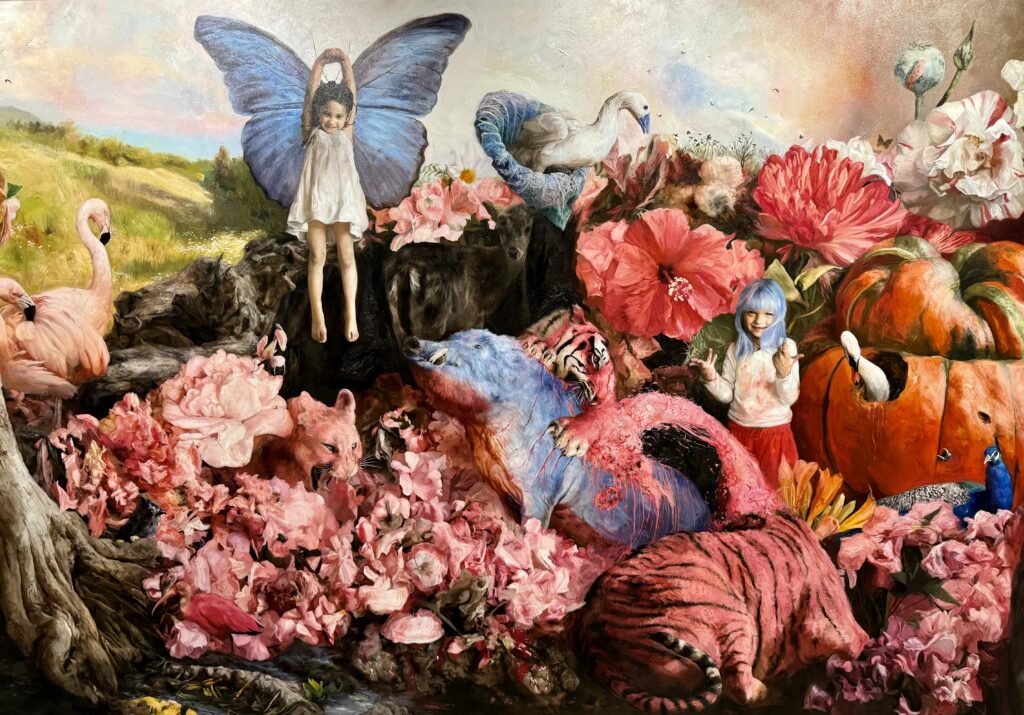
Guillermo Lorca Paintings
Lorca’s works were some of my favorite paintings at MOCO. They really drew me in.
Guillermo Lorac mixes magic and realism in a compelling way. The young Chilean artist creates large scale “painted operas” that are loaded with narratives, symbolism, and dreamlike sequences.
In each piece, there is a dark balance between nature and humankind. Wildly imaginative, his paintings depict tragedies in razor-sharp realism coupled with flourishes of Baroque.
You see giant blooming flowers, angelic girls, and regular and unknown creatures.
In The Healer, you see a young girl tending to a silverback gorilla. A sort of Beauty and the Beast theme.
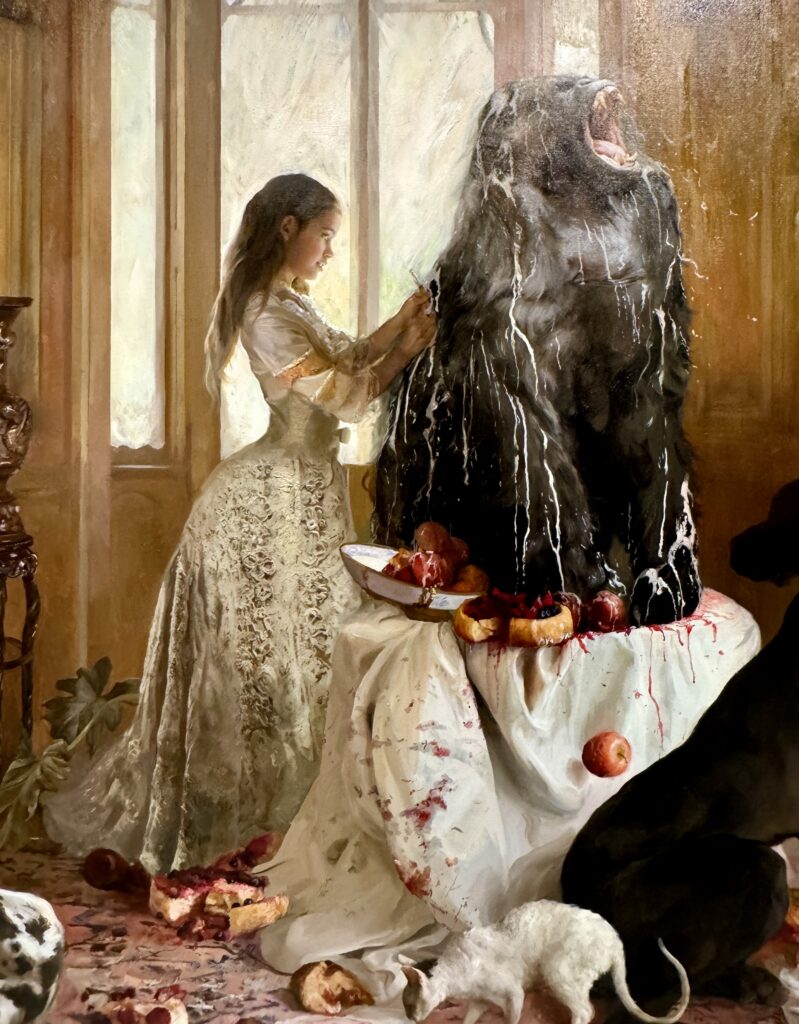
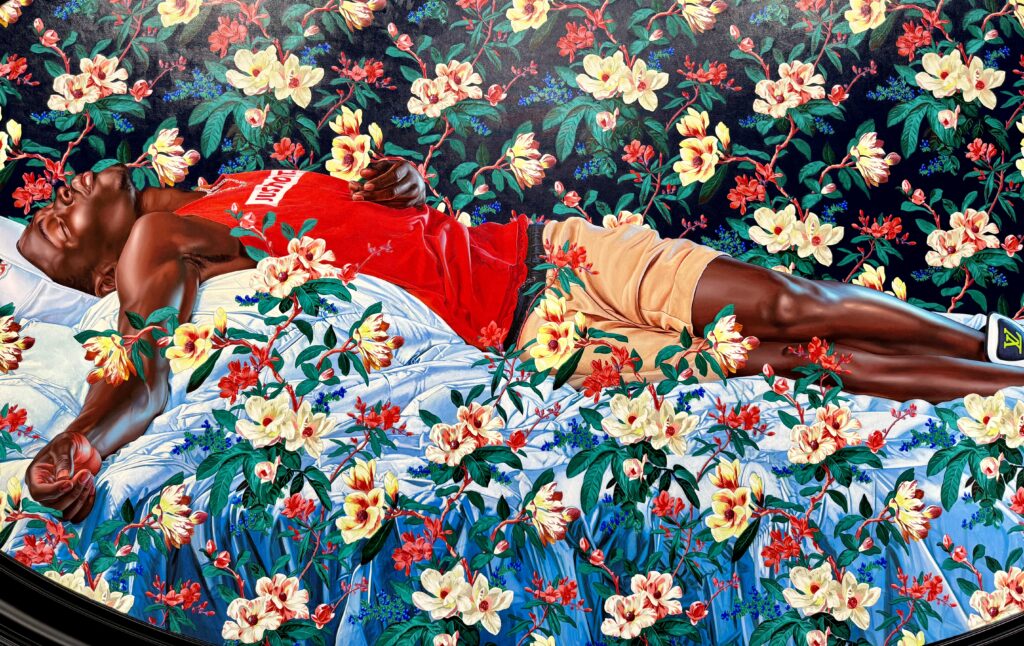
Kehinde Wiley, Sleep
What does it look like to be proud, graceful, and noble? For centuries, Western art history has limited the way we look at portraiture and power.
Kehinde Wiley has changed all that. He reconceptualizes history and paints a diverse portrait of black identity, essentially “saying yes to us.”
His entire body of work is a document of the power, versatility and beauty of the black community. All the while addressing its complicated sociopolitical landscape.
In Sleep, Wiley continues the tradition of portraying black men and women in classical poses against elaborately decorated backgrounds.
He draws from various art historical influences, including unconventional sleeping postures like the ancient sculpture Sleeping Ariadne. The decoration is on and around the figure, creating a sense of gradual encroachment.
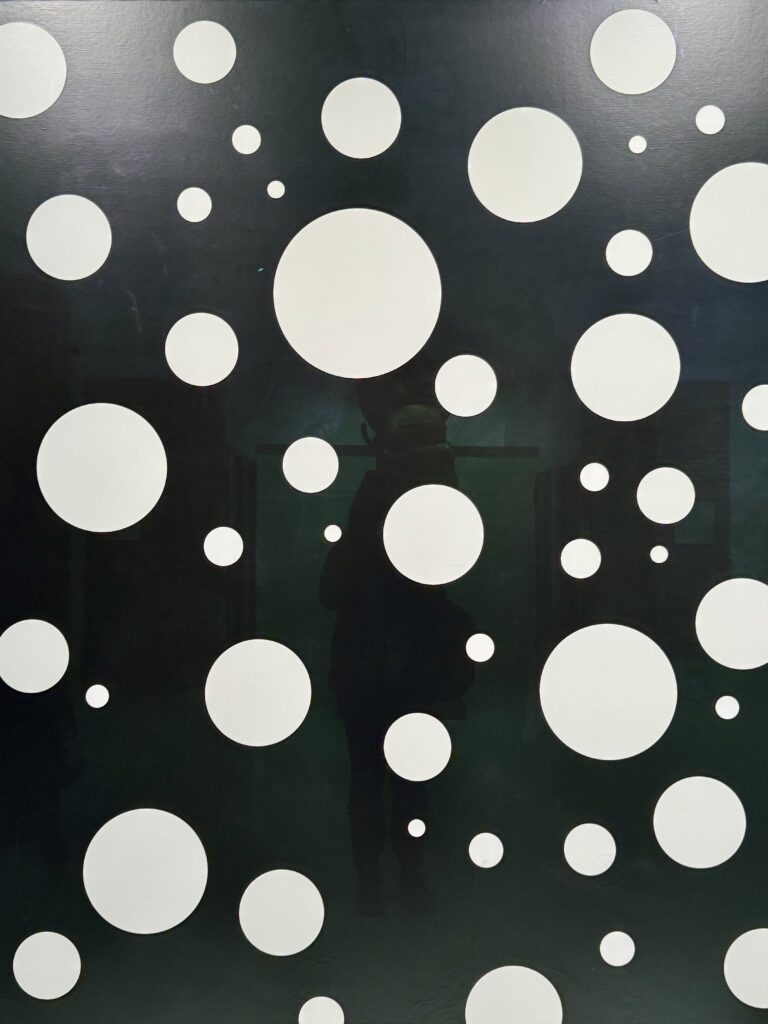
Yayoi Kusama, Night of Stars
Yayoi Kusama is the most famous living contemporary artist. The beloved artist is affectionately known as the “the Princess of Polka Dots.”
When she was young, Kusama had hallucinations that she thought were flashes of light or dense field of dots.
She turned to art as an outlet and became an inspiration for Pop artists like Claes Oldenburg and Andre Warhol. She’s best known for her “infinity rooms,” exhibitions of which can sell out months in advance.
In Night of Stars, you can see her obsession with polka dots and repeating patterns. Kusama uses dots to “obliterate herself” and as a “way to infinity.”
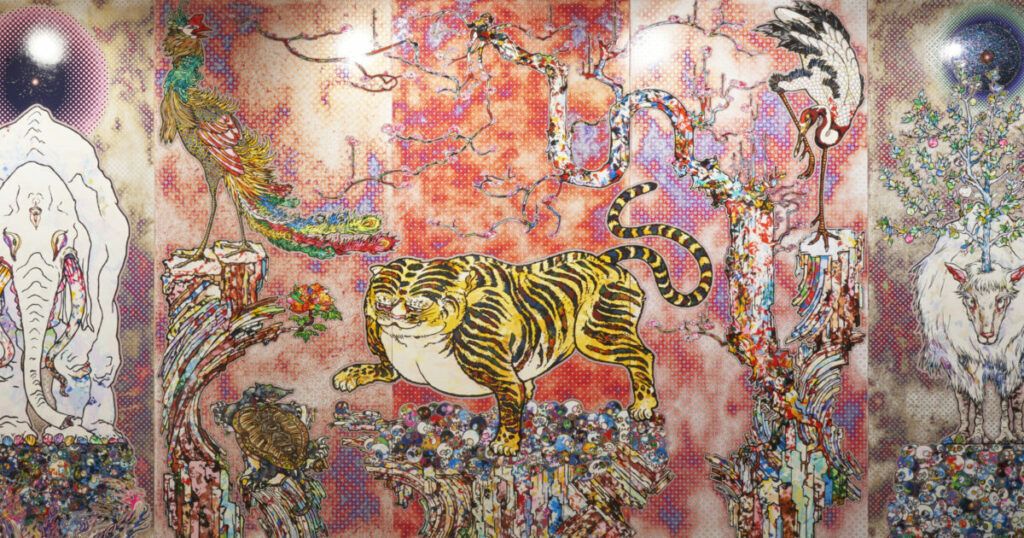
Takashi Murakami, Pink River
Japanese contemporary artist Takashi Murakami is a master across various mediums, spanning painting, sculpture, fashion, film, and animation.
Murakami’s cheerful art, a bit like Andy Warhol’s in the U.S., is super popular in Japan. He mixes Japanese and Western styles to make cute and fantastical worlds full of charm and mystery.
He calls his world Neo-Pop or Superflat. Flattening not only refers to the flatness of the image, but also the flattening of the divisions between high and low art
In Pink River, you see some fantastical looking animals set on flowers in a field of pink.
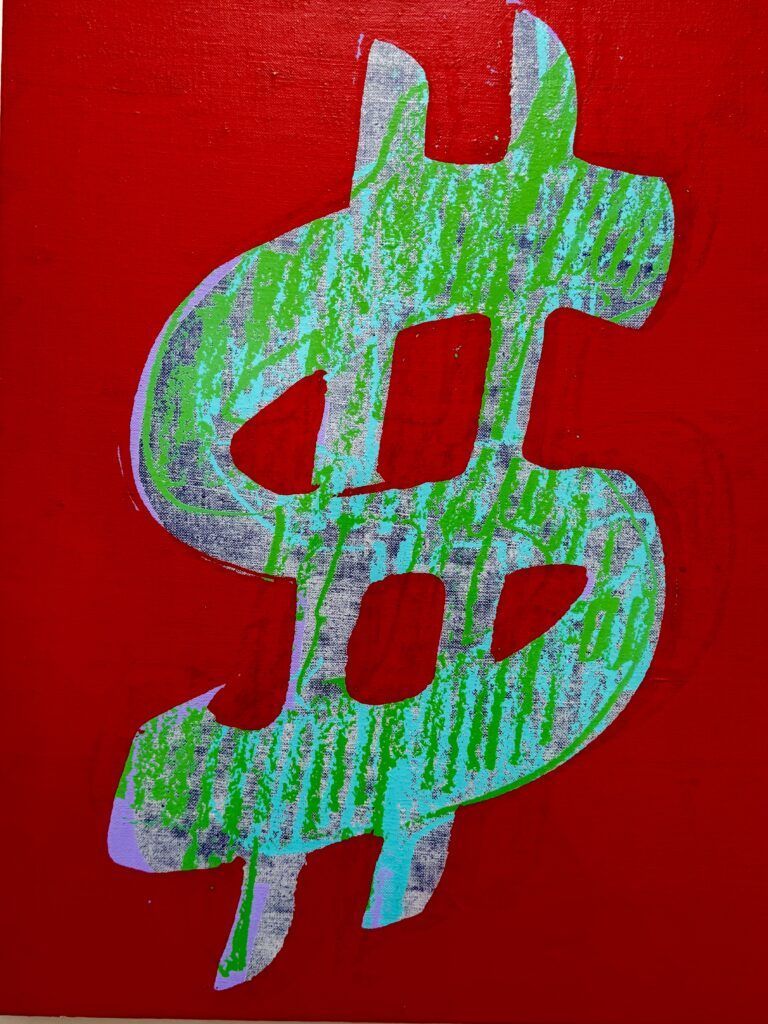
Andy Warhol, Dollar Sign
Andy Warhol, the Prince of Pop, was a groundbreaking figure of the 20th century.
He challenging traditional notions of art by merging beauty, fame, and commercialism in his iconic works. His fascination with mass-produced imagery reshaped the art world, making him a Pop Art god.
His Dollar Sign painting focuses on money, money, money. As in so much of Warhol’s work, it may have a double meaning.
On the surface, it’s a commentary on wealth and the commodification of art. But maybe Warhol is also questioning society’s values and what we spend money on. Are wealth and luxury the ultimate goal?
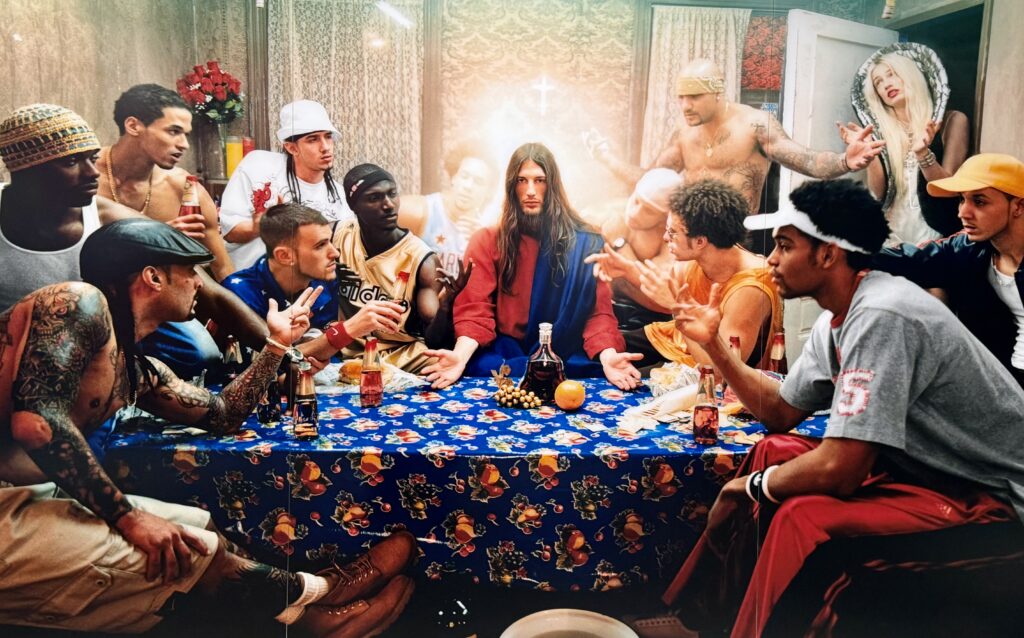
David LaChapelle, Jesus is My Homeboy
David LaChapelle is renowned for his vibrant and surreal photography, often blurring the lines between fine art and commercial imagery.
His work is characterized by extravagant compositions, bold colors, and celebrity subjects.
In this Last Supper piece, La Chapelle began to wonder about what Jesus’ original homeboys, the 12 apostles, would look like today.
It’s a sincere piece, meant to reclaim positivity surrounding religion. It’s a message that Jesus welcomes all to his inner circle.
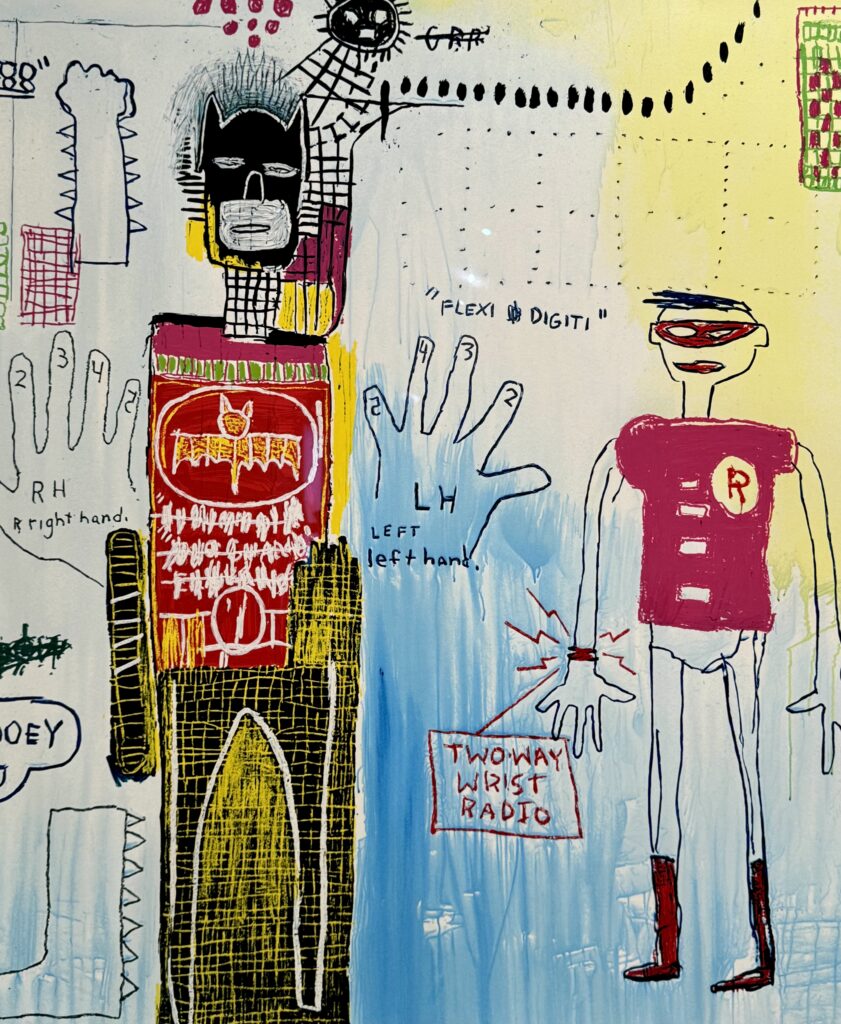
Basquiat Paintings
Jean-Michel Basquiat was a prodigy of street art. He transcended boundaries with his raw, expressive style. He delved into themes of identity, race, and society.
His meteoric rise from graffiti artist to art world sensation left an indelible mark.
The museum has quite a few of his paintings — Piano Lesson, Riddle Me This, Flash in Naples, and A panel of Experts.
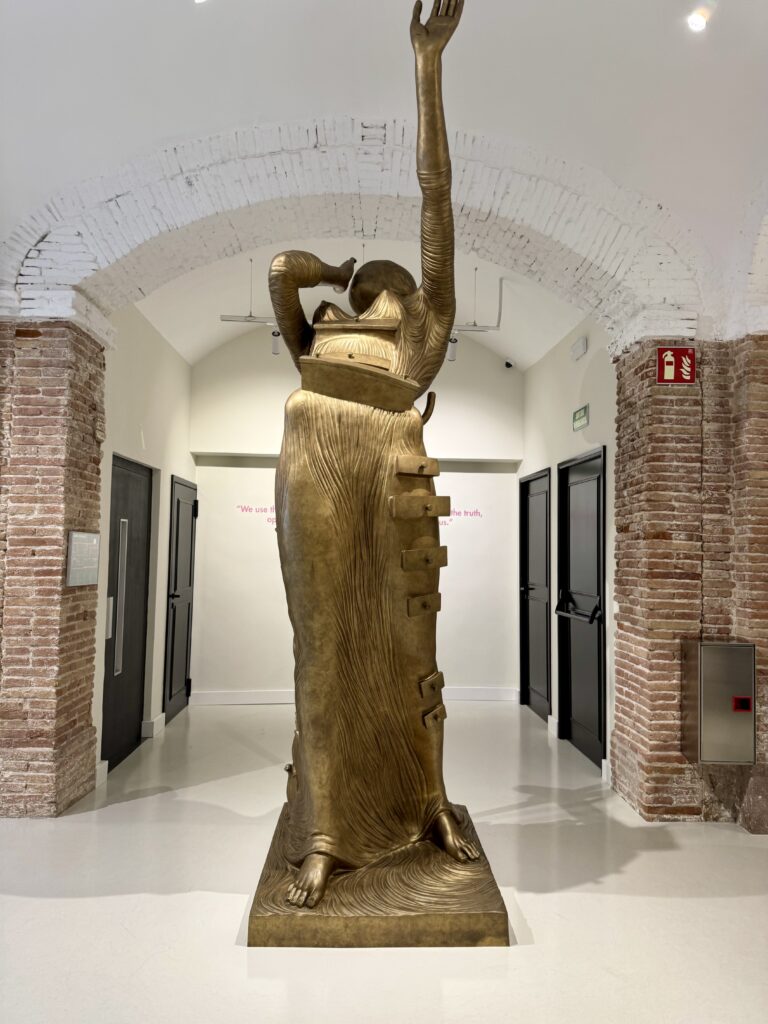
Salvador Dali, Woman Aflame
I confess I’ve never clapped eyes on a Dali sculpture before. I’m used to his paintings.
Dali was a the master of Surrealism, mesmerizing viewers with his vivid imagination and melting clocks. His iconic mustache and eccentric persona are as legendary as his mind-bending artworks.
In this bronze sculpture, Dali tries to represent every woman, rather than beautiful standards shaped by royalty or TV stars.
In Dali’s universe, the drawers that you see symbolize memory and hidden secrets. They reflect Dali’s passion for mystery and female desire.
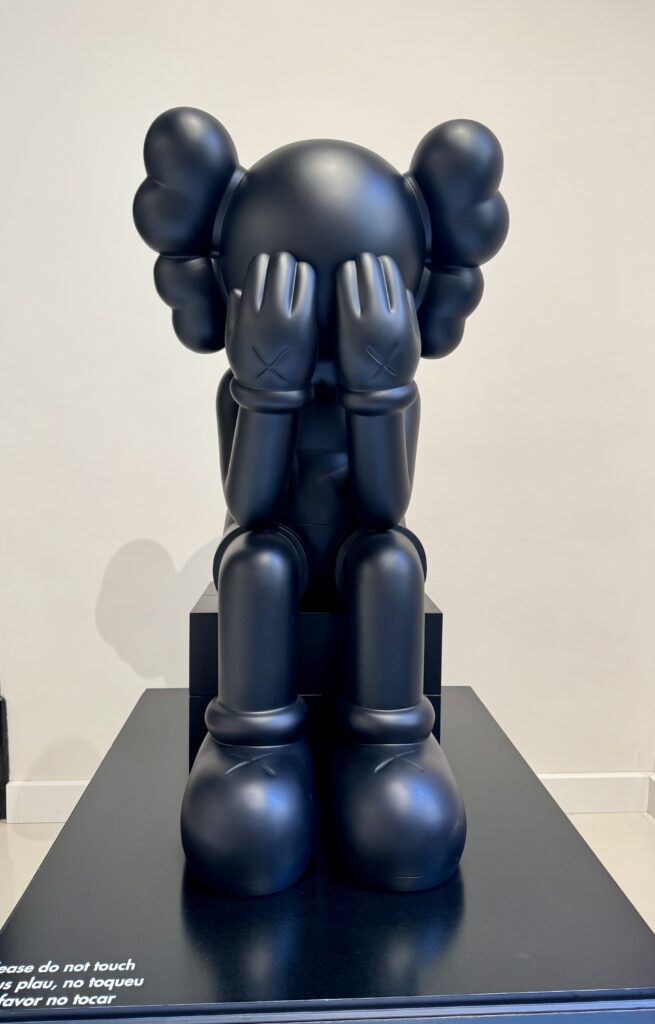
Kaws, Companion
KAWS, originally known as Brian Donnelly, is a prominent figure in the contemporary art world. He’s renowned for his distinctive blend of street art and pop culture iconography.
Early in his career, KAWS tagged billboard and posts on the streets of New York City.
Now, he creates sculptures and toys He abstracts the familiar with twists and turns in a mash-up of bold colors and bright lines.
Out of all the character that KAWS has created, his Mickey Mouse inspired Companion sculpture is the most iconic.
Companion has the artist’s trademark skull head. But it’s the size of a real life child.
Do you spy an Xed-out eyes on the hands? That’s what KAWS is known for.
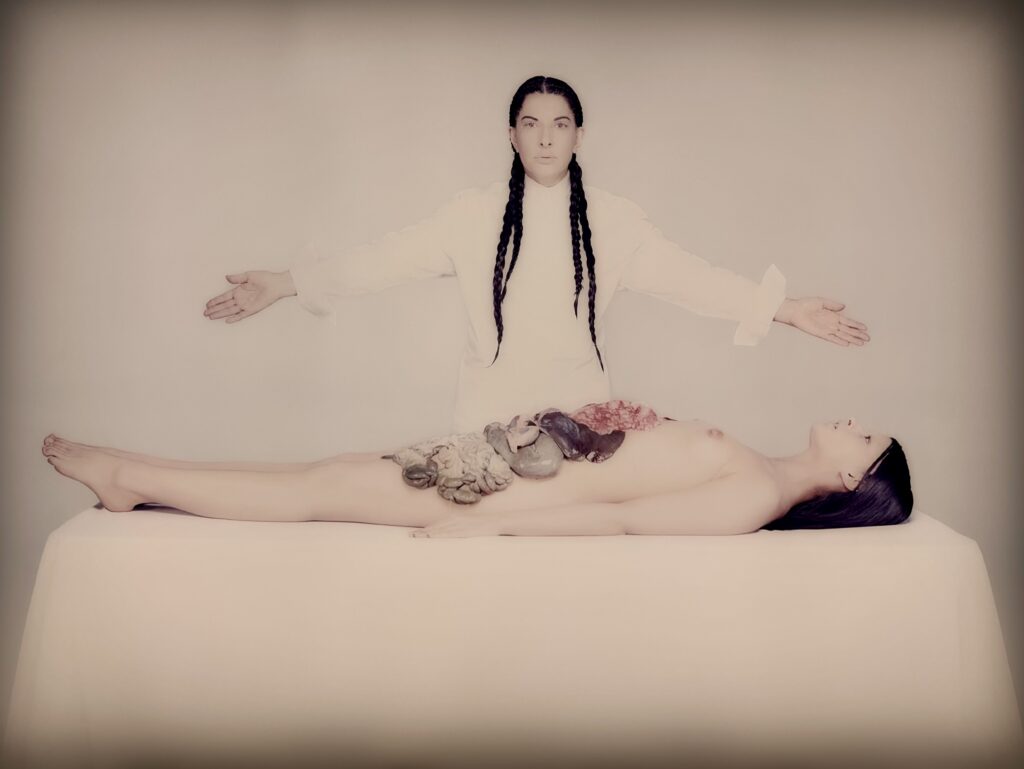
Marina Abramovic, Miracle 3
Abramovic is one of the greatest living performance and conceptual artists. When I saw this photograph, I had just listened to a podcast about her on Art Curious.
Her work is legendary and operatic. As she says, “Art comes from life.”
Abramovic uses her body as the medium and the message. She challenges the relationship between viewer and audience in a startling way.
In Miracle 3, the performance examines the harsh reality of war and its devastating impact on human life. The artwork is intended to expose pain and despair.
This artwork is part of the Miracle series, which focuses on the physical and spiritual, on light and dark.
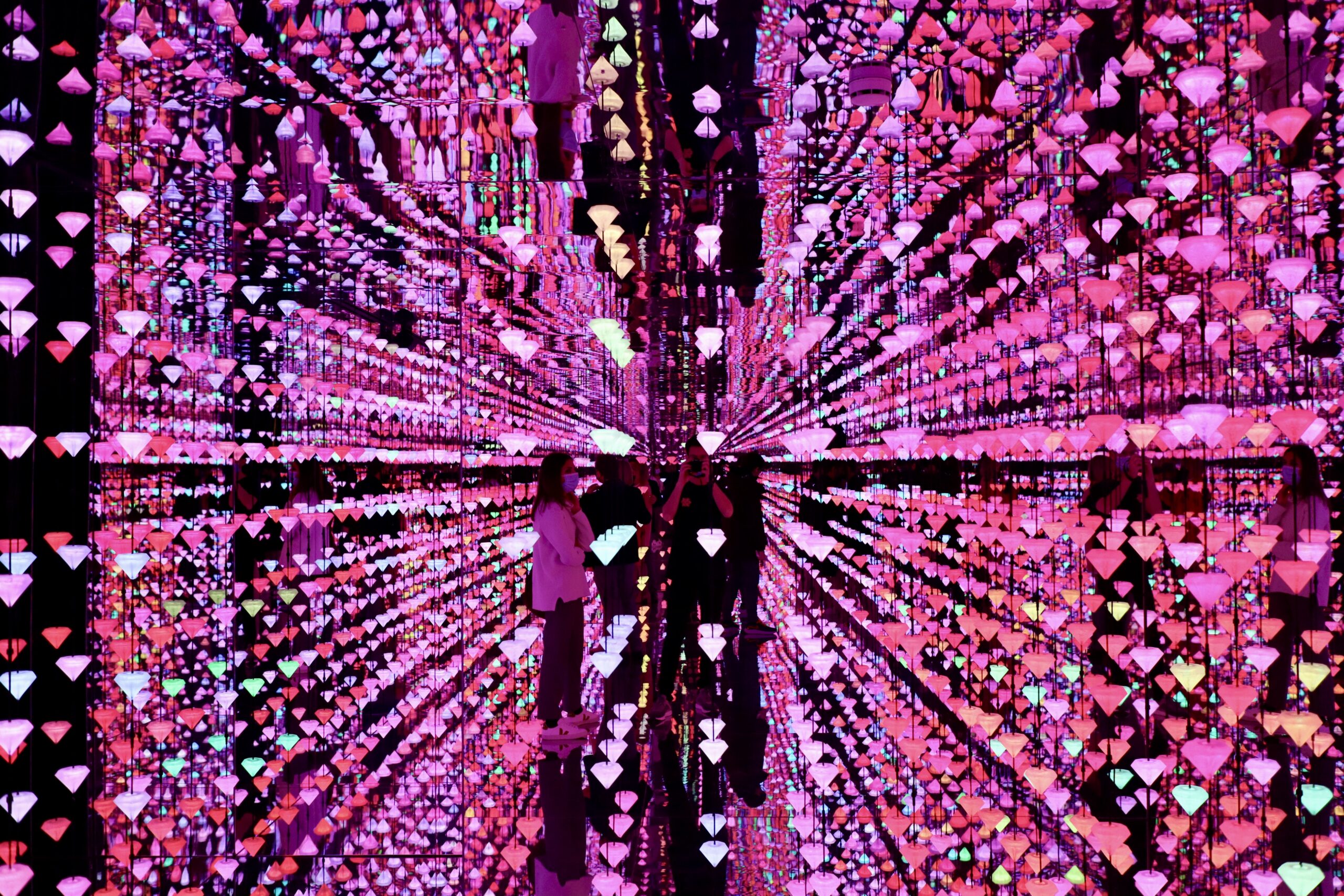
Studio Irma, Diamond Matrix
This is an immersive infinity room, similar to the more famous ones of Yayoi Kusama. It’s a multi-sensory experience for sure.
The theme of the installation is that, as humans, we face immense pressures, yet society often stigmatizes failure.
Like diamonds, which undergo tremendous stress to become brilliant jewels and one of the earth’s toughest substances, we too can emerge resilient and strong.
This installation of illuminated diamonds symbolizes our interconnectedness and shared experiences in the grand scheme of things.
It asks, who are the shining diamonds in your life?
Practical Guide & Tips For MOCO Barcelona
Address: Carrer de Montcada, 25
Hours:
- Monday 10:00 – 9:00
- Tuesday 10:00 – 8:00
- Wednesday 10:00 – 4:00
- Thursday 10:00 – 8:00
- Friday 10:00 – 9:00
- Saturday 10:00 – 9:00
- Sunday 10:00 – 9:00
Tickets: €18,95. Click here to pre-book a skip the line ticket.
Pro Tips:
This museum is very close to the Picasso Museum, so you can combine them on a visit.
The signage in English is pretty decent. But you may want to book a guided tour to learn more about the art and artists.
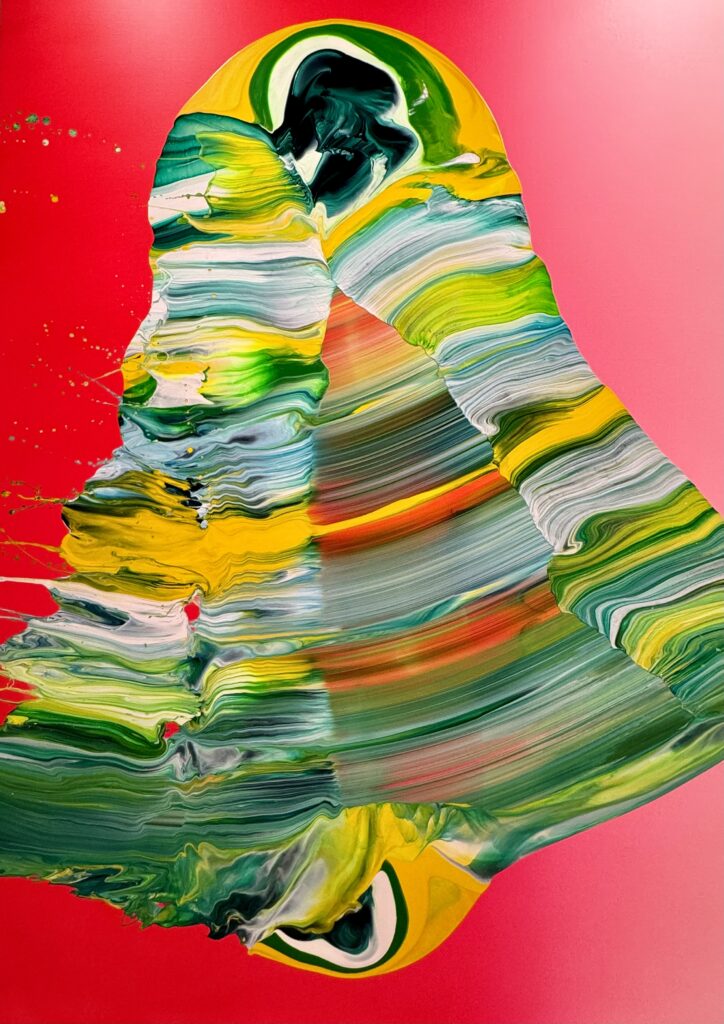
Is MOCO Barcelona Worth Visiting?
100% yes if you like modern and contemporary art.
I enjoyed it much more than that heavily touted MACBA (Museum of Contemporary Art Barcelona). It’s blissfully contemporary without veering heavily into hard to understand conceptual art.
Plus, it’s such a manageable size. It’s like a snack instead of a full commitment to a five course meal. You can easily be in and out in an hour or so.
It’s also open at night, when many things are closed. So you can do an end of the day pre-dinner visit. You’ll get a cocktail after 6:00 pm!
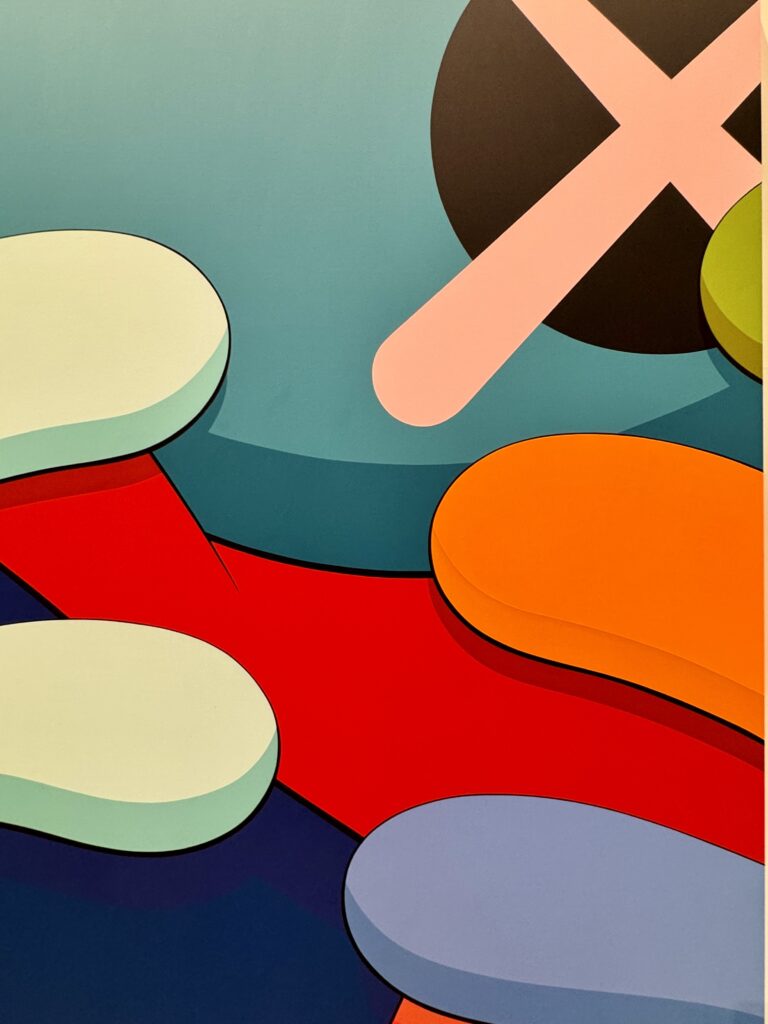
I hope you’ve enjoyed my guide to MOCO Barcelona. You may find these other Barcelona travel guides useful:
- 1 day in Barcelona itinerary
- 3 days in Barcelona itinerary
- what to do in the Gothic Quarter
- hidden gems in Barcelona
- landmarks in Barcelona
- guide to Sagrada Familia
- guide to Casa Batllo
- guide to La Pedrera
- guide to Palau Güell
- guide to architecture in Eixample
Pin it for later.

